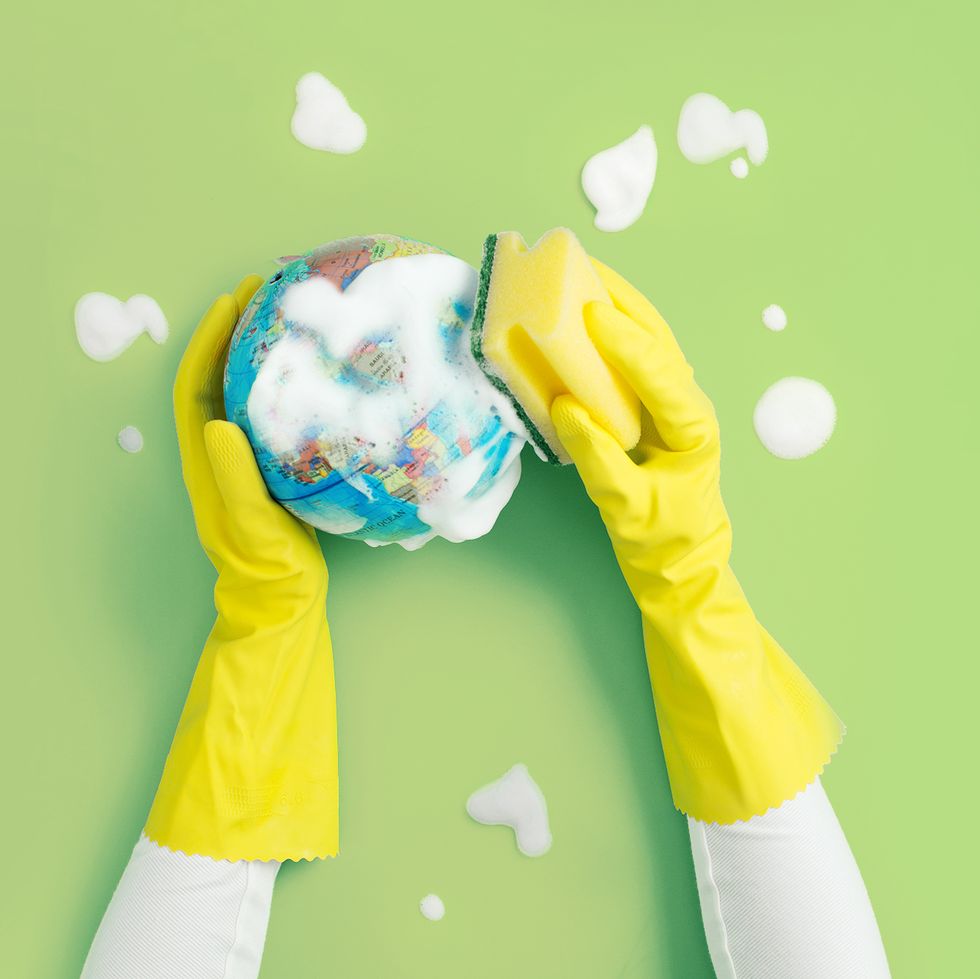
Greenwashing
Narrative: Green Washing
Click this for searching relevant information
The concept of green pr has come up as an approach to promote sustainable goods. Green pr is defined as the practice adopted by companies to develop and advertise products based on their real or perceived sustainability. Green pr has been successfully applied by key players in the market to showcase the eco-friendliness of their products. This practice has been evidenced in a variety of forms such as the use of less packaging, making products from recycled items, and sustainable fashion among others. In itself, green pr is a positive concept but some companies have sort of twisted this practice for their selfish gains. This has come to light in the form of greenwashing which is an unsustainable practice in the marketplace.
Greenwashing is a concept that was first coined by Terra Choice Environmental Marketing in December 2007 in a report that outlined the six sins of greenwashing. These six sins are the sin of the hidden trade-off, sin of no proof, the sin of vagueness, the sin of irrelevance, the sin of lesser of two evils, and the sin of fibbing. First, greenwashing is the act of intentionally misleading customers on the environmental practices of a company or the environmental benefits of a product or service. Greenwashing is further expounded according to the six sins which are explained shortly.
First, the sin of the hidden trade-off is defined as the act of suggesting that a product is “green” or sustainable because of a single feature. The most common is the use of sustainable packaging then a company labels their products as being green. This ignores the green elements of other factors in the production process such as the emissions produced in the manufacture of the product. Therefore, this is a greenwashing tactic where companies intentionally omit the negative facts surrounding a product and market the entire product as being green because of one single element.
Another form of greenwashing explained is the lack of proof or credibility for the green claims made. In most cases, the greenwashing claims are not supported by a certification from a third party to assert that the product is indeed green. Some of the companies which are known to assert this include the U.S Environmental Protection Agency (EPA) and Department of Energy’s “Energy Star” program and the U.S. Federal Trade Commission (FTC) among others.
The third form of deception used by companies is the use of vague language when branding green products. This may be through using labels that do not reveal the actual greenness of the product or the percentage of the packaging that has been recycled. Other companies may use labels such as “natural” even for products with chemical components. Another evidence is the non-disclosure of the actual place of manufacture which may be linked with unsustainable manufacturing practices.
Further, the “Sin of Lesser of Two Evils” entails creating the feeling of “greenness” to customers by selling products that are known to have a negative effect either on society or on the environment. The trick that companies use is creating the perception that the new product has less impact on the environment than earlier versions of the product. With this, customers then do not pay attention to the larger environmental impacts that the product has. Finally, the sin of fibbing occurs when a company post claims that are untrue in order to appear sustainable. Some of the common practices include labeling a product as being a “certified organic” product when, in a real sense, they are not.
The Drivers of Greenwashing
In most times, greenwashing pr is usually an intentional effort by companies to create a false impression of the product to customers. For this to happen, there certainly are some factors encouraging the firms to do so. The first driver is market factors which range from customer demand, investor demand, or pressure from their competitors. These are key factors that affect the performance of the company and even influence the company’s bottom line. Therefore, companies will do everything they can to maintain a positive performance image in the market as well as secure their bottom line. It is important to note that customers and shareholders are key stakeholders in a company hence many businesses are likely to dance to their tune. For instance, it is common to see that consumers and investors placing pressure on companies to be environmentally friendly. This pressure forces the company to paint a positive image on matters of environmental preservation and sustainability. Increased pressure from customers makes companies bow to the pressure of greenwashing to appease them. Competitors also subject companies to the pressure of communicating positively about their environmental performance. Companies tend to mimic their competitors in order to appear as being legitimate or attract more customers. This has been evidenced by the adoption of green practices because of the fear of their competitors gaining more credibility in the industry.
The incentives and ethics surrounding a firm also influence the ethical behavior of firms. In this case, incentives are usually in the form of rewards for managers for good performance as well as the attainment of financial goals. Companies engage in greenwashing practices because they support the achievement of financial goals. Companies are usually given incentives to attain certain goals and this may push them to adopt greenwashing practices. Managers usually take the shortcut of using greenwashing in their marketing to accrue these incentives. Lack of ethical codes in organizations also creates a loophole that is exploited by managers in their execution of greenwashing practices. Ethical codes are effective in explicitly spelling out the conduct that is required by every member of the organization to reduce unethical behavior. As such, companies lacking the ethical code of conduct often get away with a lot of unethical behavior such as greenwashing. This is because they are assured that they will not face penalties for their actions. Further, they can simply state that they were ignorant which would make them easily get away with such unethical practices.
Companies Guilty Of Greenwashing
A number of renowned brands have been found to be practicing greenwashing. One example is the Fiji Water Company LLC which has been slapped with a number of lawsuits from customer protection organizations due to the use of greenwashing tactics. The company has been accused of misrepresentation of its bottled water as being environmentally superior to other brands. A scrutiny of the company revealed that their products were labeled as being sustainable while the business processes were largely unsustainable. Some of the business practices that Fiji engaged in including distribution, packaging, and manufacturing contributed to billions of greenhouse gases per year.
L’Oréal is another company that has been found guilty of using greenwashing practices. For the longest time, L’Oréal branded itself as a sustainable company retailing sustainable products and using sustainable manufacturing practices. However, these claims are wrong following a review which revealed that some of the product components at L’Oréal were not sustainable. Some of these ingredients were confirmed to have a negative influence on the body. An example is where L’Oréal uses microbeads in cosmetics despite it being banned in many countries. Microbeads have been banned because they comprise solid particles which are harmful to aquatic life by contributing to their death and extinction. This is a well-known fact but the company still uses it as a key component in soaps and cosmetics products. L’Oréal has also been dismissing the rule to implement policies that stop them from using components with toxic chemicals in the manufacturing process such as phthalates and triclosan. Finally, L’Oréal lipsticks were also found to have lead which is a highly toxic chemical to human life. Therefore, this substantiates the claims that indeed, L’Oréal has been practicing greenwashing in their marketing messages which have been misleading customers.
L’Oréal has also been practicing deforestation in its supply chain. This is seen from the continuous use of palm oil despite the pledges made to be 100% sustainable and using the same tagline in their marketing campaigns. L’Oreal also engaged in the mining of Mica which is used in makeup. While the product itself is not harmful, the process of production has been unsustainable. This is because the company has been using child labor to mine for this product in India. These claims water down the fact that L’Oréal claims to be sustainable. It asserts that the company has applied to greenwash in its supply chain.
Finally, General Electric has been in the spotlight for greenwashing following the “Eco-imagination” campaign. This campaign painted the image of the company as one that is environmentally friendly. This is a case of false claims such as the LG Electronics is-certified Energy Star refrigerators. However, a number of these fridges did not meet the efficiency standards required to earn the certification.
Effects of Greenwashing
Greenwashing may be a practice that accrues benefits to the organization but it has some effects or risks to the external environment. First, the central danger of greenwashing is that it can mislead people into acting unsustainably. For instance, a customer may be misled to buy a product when a company claims that they are eco-friendly when they are not. In using the products, customers contribute to environmental damage unintentionally. If these environmental claims turn out to be false, then innocent customers accidentally contribute to harming the environment by supporting the company. At the same time, greenwashing affects the business itself as it may create a negative brand image. The business reputation may be severely affected by greenwashing practices. Sequentially, the revenue and bottom line of the business is affected. By demonstrating a false commitment to sustainability, the company may appear dishonest to the public hence a negative brand image. Further, false sustainability claims contribute to an increase in global carbon emissions by burning fossil fuels and advertising environmentally friendly products. This leads to climate change as the fossils emit greenhouse gases from thus triggering human-induced climate change.

Sources from https://www.bing.com/images/search?view=detailV2&ccid=oxc%2BMeWz&id=E7E2D85DA206695C5587ED25A92970C991167664&thid=OIP.oxc-MeWz-2CeMi2THps_WwHaD2&mediaurl=https%3A%2F%2Fwww.global-organics.com%2Fimages%2Fsustainability_ss1.jpg&exph=441&expw=847&q=Green+Sustainability&simid=608001059545511291&form=IRPRST&ck=EADB3C102D908BF80B918FA6715DB24B&selectedindex=21&ajaxhist=0&ajaxserp=0&vt=0&sim=11

Sources from https://www.bing.com/images/search?view=detailV2&ccid=JGYp5Ev%2f&id=181612CA71B8942FB02D74E61C306F1D36DE5ADF&thid=OIP.JGYp5Ev_QopvIbeZdbPrQwHaE8&mediaurl=https%3a%2f%2fwww.brookswealth.co.uk%2fwp-content%2fuploads%2f2020%2f05%2fGreen-Savings-scaled.jpeg&exph=1707&expw=2560&q=Green+Sustainability&simid=608054304257934335&FORM=IRPRST&ck=BEE277EE0C5F6F3B9B26E13176ADF85A&selectedIndex=13&ajaxhist=0&ajaxserp=0
How To Avoid Greenwashing As A Consumer
For consumers
In most cases, customers are not aware of the greenwashing practices done by these companies. However, ignorance is no excuse. Therefore, this section is dedicated to raising awareness on how to avoid greenwashing as a consumer. The first thing that people should look out for is the use of vague buzzwords in products. Some of these are easy to point out such as chemical companies that claim that their products are “all-natural.” In such cases, people should look beyond the buzzwords and taking time to research the brand and its actual practices. In other cases, customers should be on the lookout for approved seals for sustainable companies.
Another thing that customers should look out for is idyllic imagery which is the visual representation of buzzwords. Such products usually lean heavily on having a green aesthetic such as earth tones which project the image that the product is from the earth. Other times, companies may include images of tropical forests, mountains, or animals to make the impression that these products are of benefit to wildlife or to nature. To avoid falling for these tactics, be sure to research the companies, and actually read the food labels.
Another way to detect a greenwashed product is the lack of transparency, especially for fast fashion products. In most cases, sustainable companies usually document their sustainability processes, practices, and standards in order to inform their customers of their commitment to this case. However, companies that are not entirely sustainable tend to shun away from making such discussions on their websites. Most of the time, these companies depend on vague, seemingly positive words. Another thing to look out for to show that a brand is not sustainable and might be greenwashing is if the site contains hundreds of options. Typically, sustainable brands will focus more on perfecting a select amount of classic styles.
Customers should also be on the lookout for irrelevant claims such as those that are “technically true” but not relevant. One example is a “CFC-Free” branding which is irrelevant since CFCs are banned by law. Therefore, this is not exactly an indication of sustainability or environmental friendliness. Further, companies claiming to be greener than their competitors are most often unsustainable especially when the larger industry is known for engaging in unsustainable practices. Finally, boycotting companies that use greenwashing business tactics will make them realize the essence of sustainability
For companies
Greenwashing may seem like an attractive concept at first since it brings products closer to sustainable ways. However, using greenwashing as a core marketing practice can create much more problems than benefits for the company and other stakeholders. The risk of such practices is irreparable and may damage the image of the company and the aversion of consumers does not compensate for momentary exposure. Therefore, companies need to avoid this unethical practice. Companies can avoid greenwashing by ensuring that sustainability is their premise in planning. Here, companies should prioritize the rational use of materials, energy, and water throughout the supply chain. Another thing is an investment in quality labor to avoid compromises in the lower end of the supply chain by engaging in child labor. Having quality labor also means that the employees will have more control over the processes that they perform and they will efficiently execute them. The use of quality materials should also be prioritized by companies seeking to avoid greenwashing. Using natural resources and minimizing energy use are also viable approaches to avoid greenwashing. Here, companies can focus on using natural resources such as solar energy, green roofing, and air currents to ensure that minimal energy is used. Separation of waste types is another thing that companies can do to ensure sustainability in their processes. The waste can be separated before they are taken to a landfill after the manufacturing process. Greenhouse gas emissions are an important concern for many companies. This is often the key issue that increases the unsustainability of companies since their gaseous waste contributes to toxins in the environment. In the end, they contribute to climate change. Therefore, companies can become more intentional in this by making an inventory and mitigating the greenhouse gases in the manufacturing process. Other practices such as carbon offset strategies or wetlands for slurry and sewage treatment in buildings and industries can be adapted to mitigate carbon dioxide and methane generated by organic waste.
#iSustain#greenwashing
References
Fiji Water. (n.d.). [photograph of a bottle of Fiji]. Sources from fiji water company images – Bing
Green sustainability-Bing. (n.d.). [photograph of think green]. Sources from greenwashing images-Bing
Green sustainability-Bing. (n.d.). [photograph of greenwashing]. Sources from greenwashing images – Bing
Green sustainability-BIng. (n.d.). [photograph of green pr]. Sources from green pr images – Bing
Green sustainability-BIng. (n.d.). [photograph of sustainability development city]. Sources from RPRST&ck=26882411D7138B4A34550821882867D9&selectedIndex=0&idpp=overlayview&ajaxhist=0&ajaxserp=0
Green sustainability-Bing. (n.d.). [photograph of sustainability quotes]. Sources from green sustainability picture – Bing
Green sustainability-Bing. (n.d.). [photograph of green city cartoon]. Sources from Green Sustainability – Bing
Green sustainability-Bing. (n.d.). [photograph of green coins growing up]. Sources from Green Sustainability – Bing
Green sustainability-Bing. (n.d.). [photograph of sustainable architecture design]. Sources from Green Sustainability – Bing
Green sustainability-Bing. (n.d.). [photograph of sustainable ingradients]. Sources from Green Sustainability – Bing
Green sustainability-Bing. (n.d.). [photograph of the sustainable economy]. Sources from Green Sustainability – Bing
Green sustainability-Bing. (n.d.). [photograph of green sustainable]. Sources from Green Sustainability – Bing
L’oreal personal care. (n.d.). [photograph of many cosmetics]. Sources from l oréal images – Bing
LG Dryer. (n.d.). [photograph of LG brands]. Sources from lg electronics images – Bing
